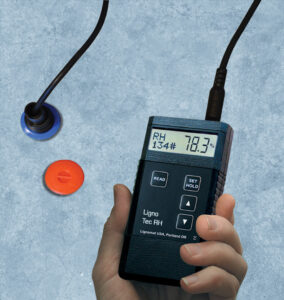Using Lignomat In-Situ Probe for ASTM F2170
Watch this video to learn more about how to perform ASTM F2170 test with Lignomat In-Situ Probe. 👉 Click the link here to watch on YouTube: In-situ Probe Method for ASTM F2170 Test.🔔 Don’t forget to like, comment, and subscribe on YouTube for more practical tips and reviews! For more information, please contact Grete Heimerdinger […]
Read More >









